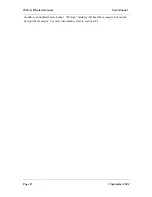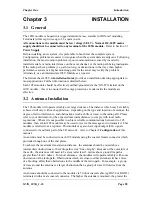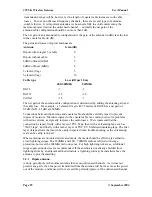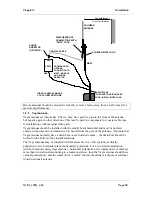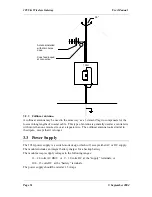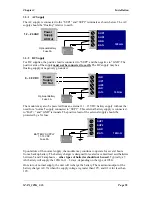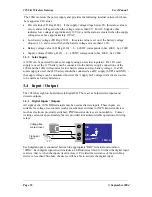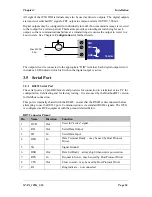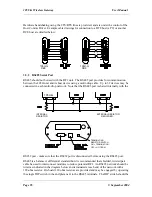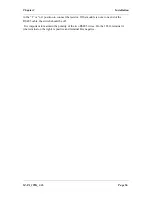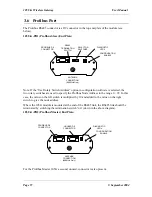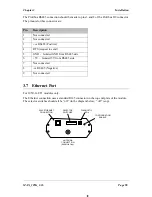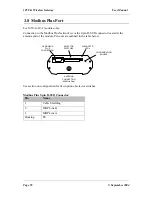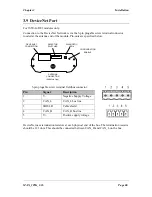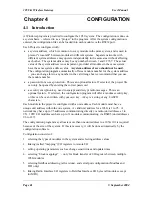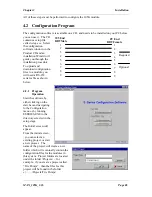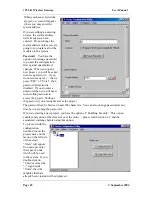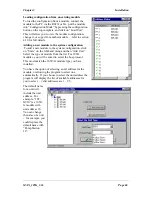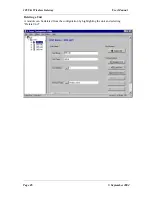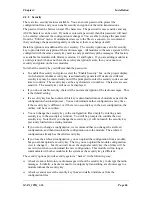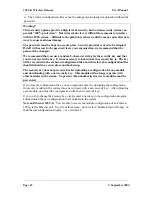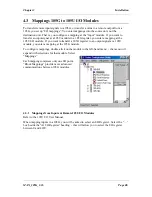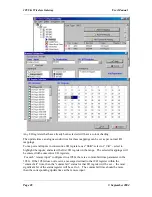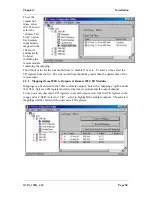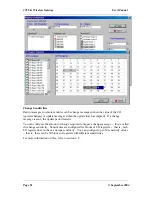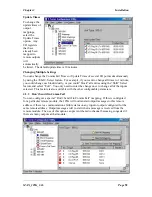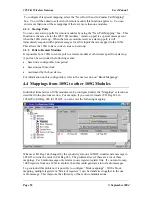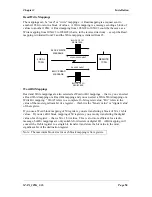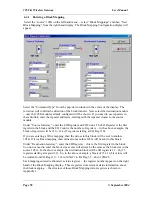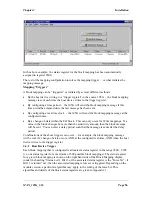
105U-G Wireless Gateway
User Manual
Page 41
© September 2004
Chapter 4
CONFIGURATION
4.1
Introduction
A Windows program is provided to configure the 105U system. The configuration is done on
a system basis - referred to as a “project” in the program. After the system configuration is
entered, the configuration file can be loaded into each module via the RS232 port.
Each Project is configured with:
•
a system address, which is common to every module in the same system, and is used to
prevent "cross-talk" between modules in different systems. Separate networks with
different system addresses may operate independently in the same area without affecting
each other. The system address may be any number between 1 and 32 767. The actual
value of the system address is not important, provided all modules in the same system
have the same system address value.
A system address of zero should not be used.
The configuration program automatically offers a random number for the system address
- you can change this to any number in the valid range but we recommend that you use
the random number.
•
a password for access protection. This is an optional feature. If selected, the project file
can only be opened by entering the correct password.
•
a security encryption key, used to encrypt and decrypt radio messages. This is an
optional feature. If selected, the configuration program will offer a random security key,
or this can be over-written with your own key. A key is a string of any 8 ASCII
characters.
Each module in the project is configured with a unit address. Each module must have a
unique unit address within the one system. A valid unit address for a 105G is 1 to 95. A
network may have up to 95 addresses communicating directly via radio (unit addresses 1 to
95). 105U I/O modules can have up to 31 modules communicating via RS485 (unit addresses
96 to 127).
The configuration program may allocate more than one unit address to a 105G if it is required
because of the size of the system. If this is necessary, it will be done automatically by the
configuration software.
Configuration consists of:
1.
selecting the types of modules in the system and selecting address values
2.
linking (called “mapping”) I/O registers to remote I/O
3.
setting operating parameters such as change sensitivities and update times
4.
selecting “block mappings” - only for block transfer of I/O registers between multiple
105G modules
5.
selecting fieldbus addressing (all versions), and serial port configuration (Modbus and
DF1 only)
6.
linking Radio Interface I/O registers to Fieldbus Interface I/O bytes (all modules except
for MD1)

